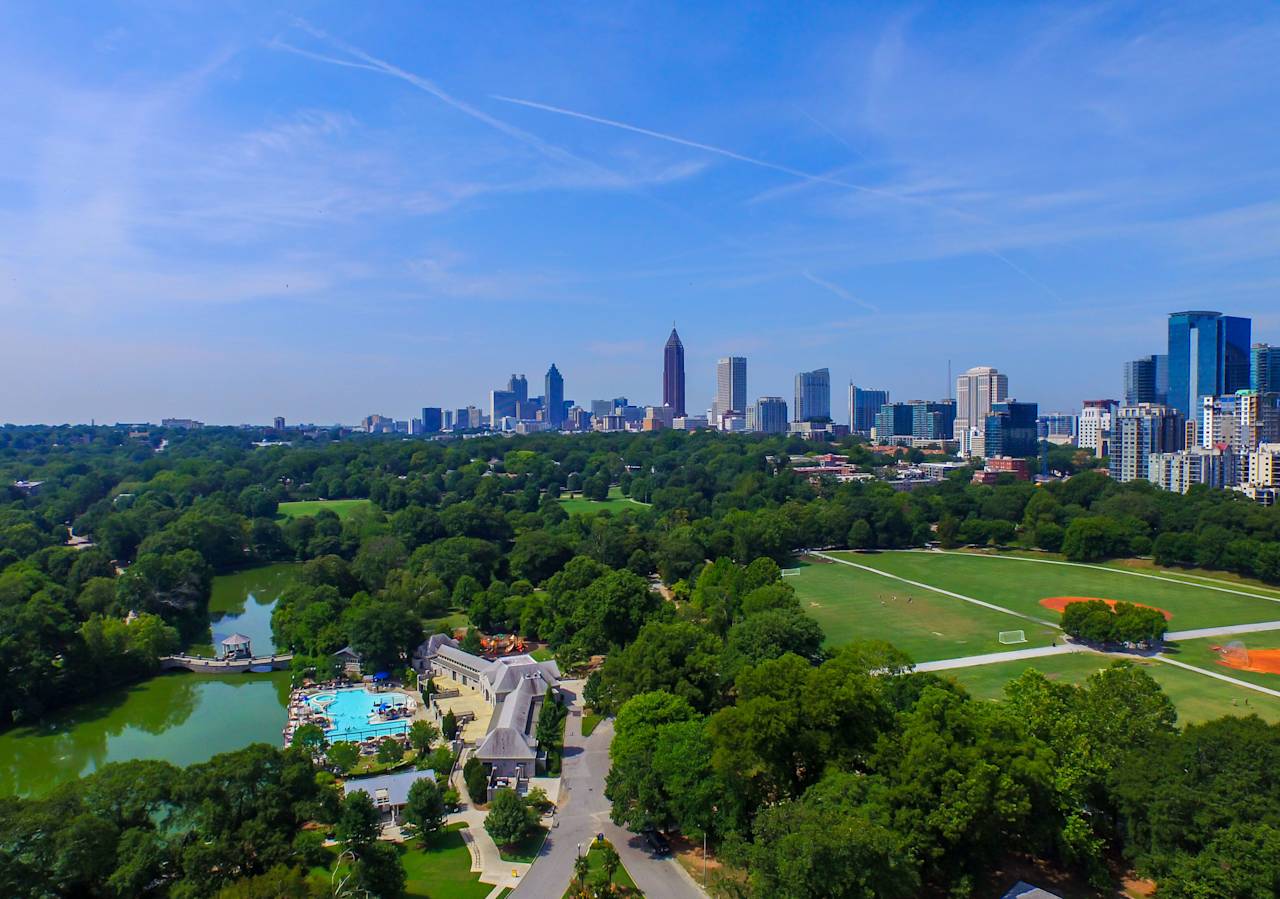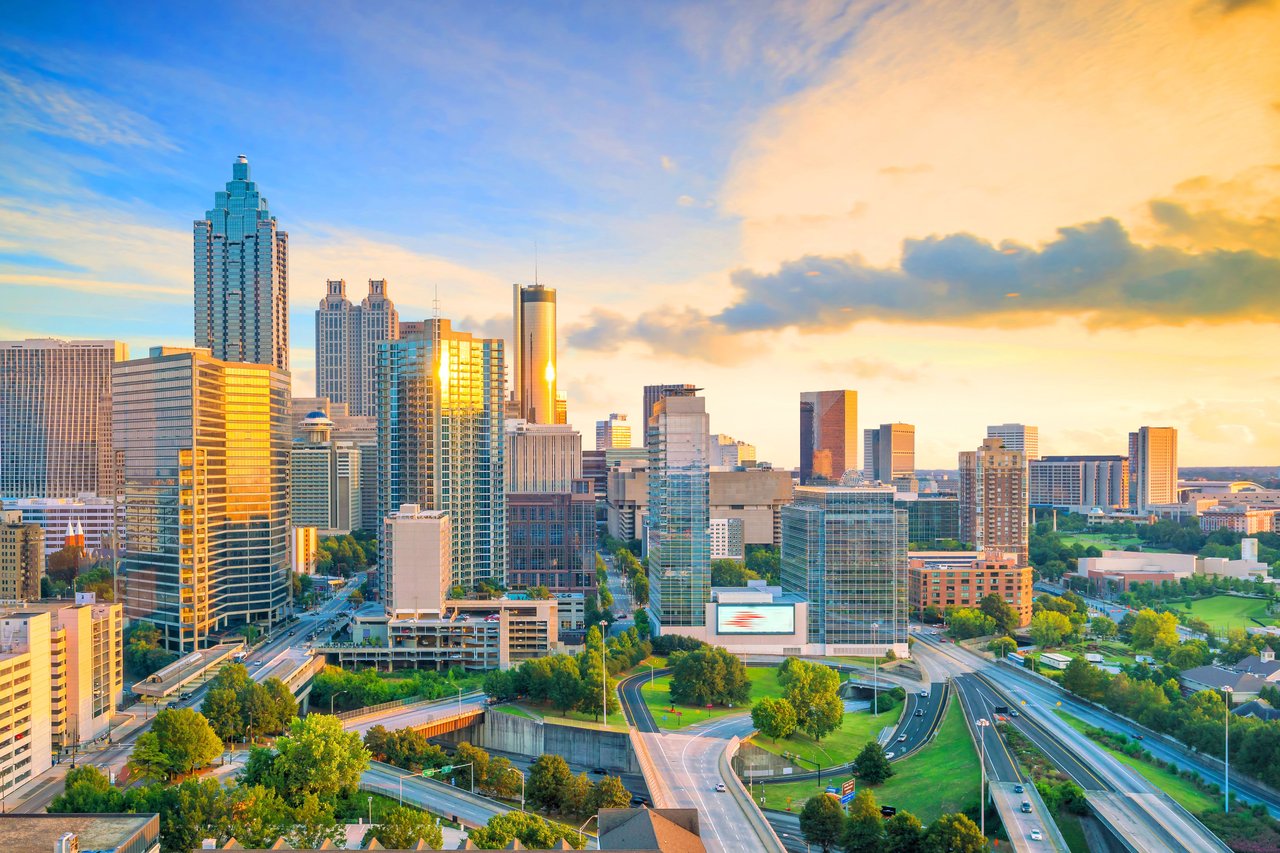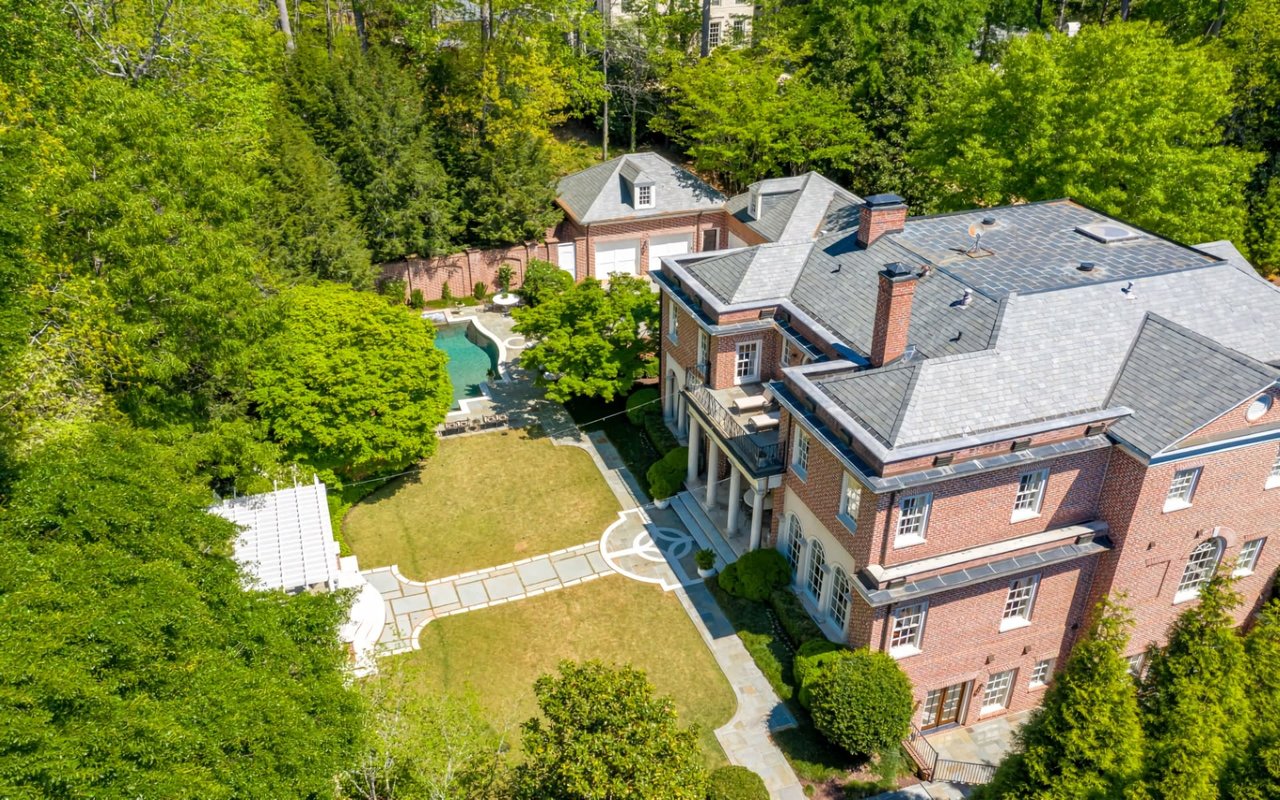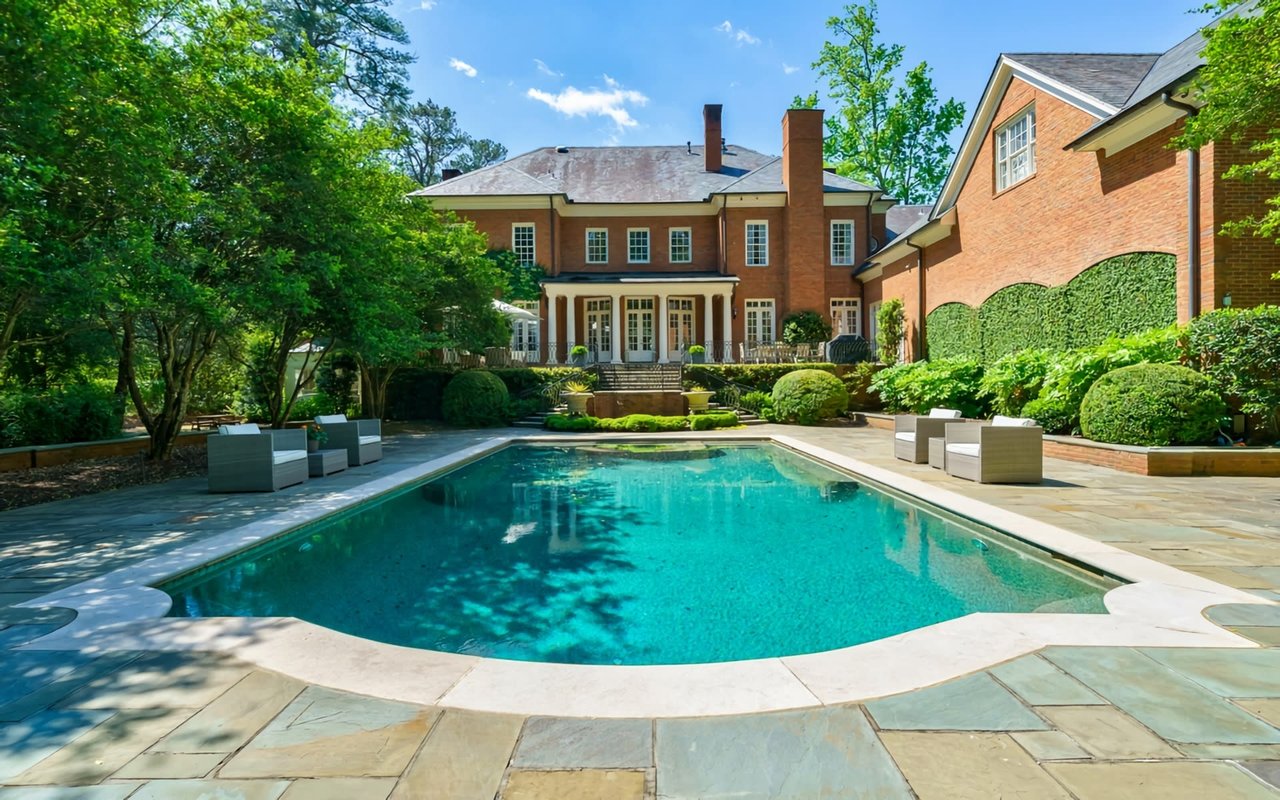Welcome to Intown Atlanta
Intown Atlanta offers some of the best Urban neighborhoods in the country! It doesn’t matter if you’re looking for a weekend hike, dining experience or the best bar hopping experience that the ATL has to offer, the BeltLine has become the looping vein of our glorious city. Living inside the City of Atlanta offers so many walking neighborhoods that are convenient to everything. With the Eastside Trail one of the most popular spots on the loop, you can expect people hanging out, working out, eating out, and more.
Ansley Park
Ansley Park is an oasis of gracious, elegant homes on tree-lined lanes surrounding, Winn Park, McClatchey Park and Ansley Golf Club’s beautiful course. The historic neighborhood is located in Intown Atlanta, close to the Atlanta Botanical Garden, Piedmont Park and The High Museum. Classic Tudor, Italian Renaissance, Federal and Colonial style homes grace the winding, tree-lined streets of this historic Intown neighborhood. Nestled between Peachtree Street and Piedmont Road, Ansley Park was developed in 1904 as an “automobile suburb” and has evolved into the prestigious and popular neighborhood it is today. An ideal location for outdoor enthusiasts, Ansley Park is home to the renowned Ansley Golf Club and is bordered by Piedmont Park, with access to the Atlanta Botanical Gardens, Piedmont Driving Club and the Belt-Line. Residents enjoy the neighborhood’s convenient location, which is minutes away from Virginia Highland, Midtown, Buckhead and Downtown.
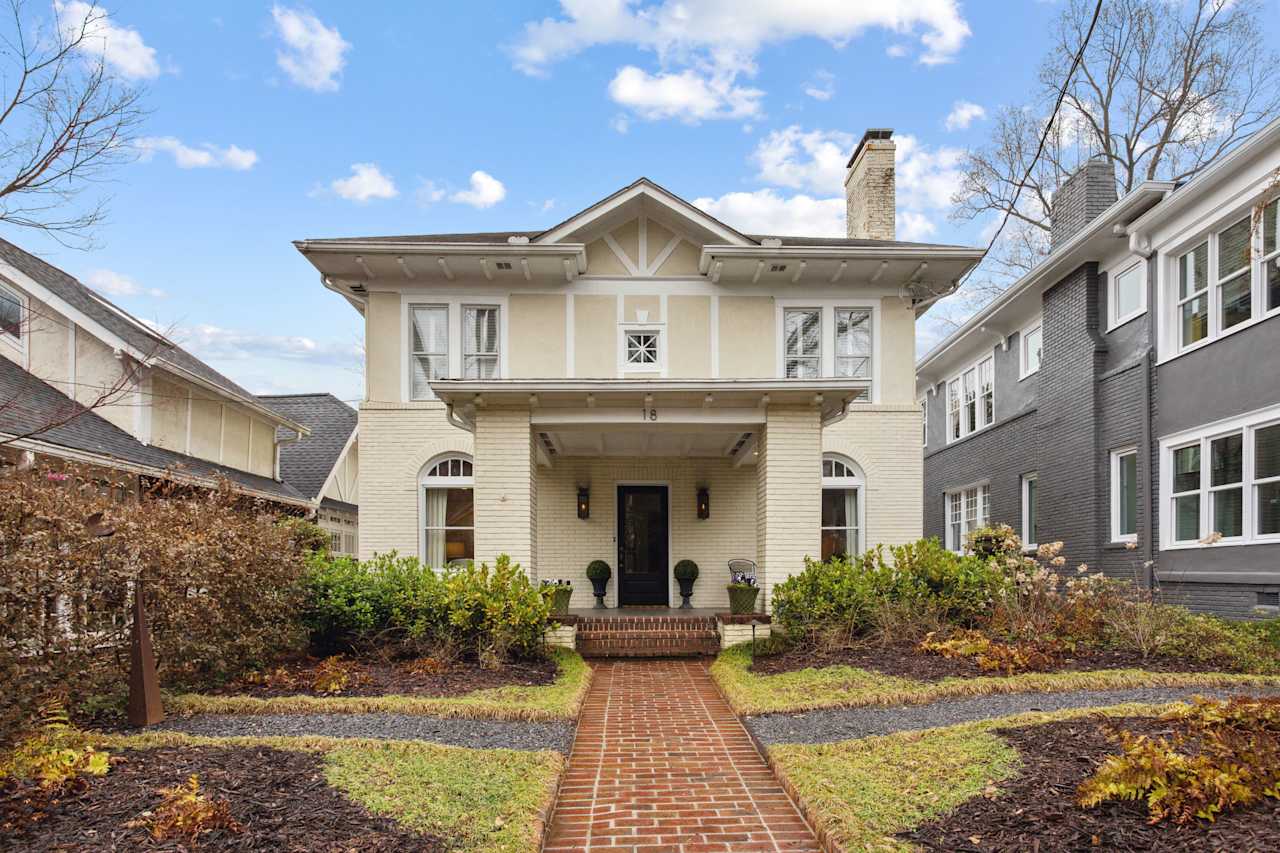
Candler Park
Candler Park is a quiet, largely residential neighborhood, with late-19th- and early-20th-century homes. Community events are often held at landscaped Candler Park, which has a golf course, playground, tennis courts, sports fields and swimming pool. Trails wind past outdoor art installations in adjacent Freedom Park. McLendon Avenue is home to laid-back cafes and restaurants that serve wonderful Southern food. East of Poncey Highland and west of Decatur and Lake Claire, Candler Park is brimming with charm.
Druid Hills
Druid Hills is a community which includes both a census-designated place in unincorporated DeKalb County, as well as a neighborhood of the city of Atlanta. Druid Hills is a neighborhood in Atlanta, Georgia with a population of 3,206. Living in Druid Hills offers residents a dense suburban feel with an urban location. In Druid Hills there are a lot of bars, restaurants, coffee shops, and parks. Many families and young professionals live in Druid Hills and residents tend to be liberal. The public schools in Druid Hills are highly rated. The planned community was initially conceived by Joel Hurt, and developed with the effort of Atlanta's leading families, including Coca-Cola founder Asa Candler. It contains some of Atlanta's historic mansions from the late 19th and early 20th century. Druid Hills includes the main campus of Emory University, which relocated to Atlanta in 1914. Druid Hills was designed by Frederick Law Olmsted and was one of his last commissions.
A showpiece of the design was the string of parks along Ponce de Leon Avenue, which was designated as Druid Hills Parks and Parkways and listed on the National Register of Historic Places on April 11, 1975. The remainder of the development was listed on the Register as the Druid Hills Historic District on October 25, 1979. Later the Park and Parkways district was consolidated into the Druid Hills Historic District. The Druid Hills neighborhood is characterized by rolling hills, magnificent trees and shrubs and gorgeous, expansive houses. It's Ponce de Leon corridor bears the imprint of the founder of American landscape architecture, Frederick Law Olmsted. The brainchild of Joel Hurt, the neighborhood was brought to fruition by some of Atlanta's most prominent businessmen, including Asa Candler, founder of Coca-Cola. It was these movers and shakers of the city who lived in the neighborhood during the early decades of the twentieth century. In 1914, Druid Hills was permanently altered with the announcement that it would be the site of Emory University's new main campus. Now the residents coexist with what has become an international university community. Historian Robert Hartle Jr. has written an honest, impeccably researched tribute to Druid Hills, truly one of the jewels in Atlanta's crown
Grant Park
Grant Park is a residential district, known for its Victorian mansions and Craftsman bungalows. Its namesake park is laced with walking trails and home to Zoo Atlanta, with popular panda and tiger exhibits. Nearby Oakland Cemetery has ornate monuments and the graves of notable Atlantans, like “Gone With the Wind” writer Margaret Mitchell. Young locals gather on Memorial Drive for Tex Mex, noodles and pub fare. Home to Atlanta’s oldest public park, the Grant Park neighborhood was named for Lemual P. Grant, a civil engineer considered to be the “Father of Atlanta.”
Recognized for its eclectic mix of homes ranging from ornate Victorian and Queen Anne mansions to Shotgun and Craftsman style bungalows, the Grant Park neighborhood is also known for its namesake park which is home to the Atlanta Zoo. Grant Park is the largest historic district in Atlanta, which limits new construction to only structures that conform to the character of the old neighborhood. Access to the BeltLine, East Atlanta and Downtown are just a few of the reasons Grant Park remains such a highly desirable neighborhood.
Inman Park
Inman Park is a highly desirable Intown neighborhood along the premier section of the Atlanta Beltline, and just minutes from both Downtown and Midtown Atlanta. Inman Park is well known for its tree-lined streets, pocket parks that flow throughout the neighborhood, and beautifully restored homes. Inman Park is also home to one of Intowns favorite destinations for dining. Developed in the late 1880’s, Inman Park is considered to be Atlanta’s first planned suburb. Originally conceived as an electric streetcar commuter neighborhood, Inman Park contains some of the best examples of 19th century residential architecture in the city including ornate Victorian and Queen Anne homes to smaller bungalows and foursquare style homes. Bounded by the Beltline’s Eastside Trail on the west, Freedom Parkway on the north, Moreland Avenue on the east and Dekalb Avenue on the south, the entire neighborhood is listed on National Register of Historic Places. A recent surge in development has added trendy condominium buildings and lofts along with a host of new restaurants and shops.
Kirkwood
Kirkwood is a national historic designated neighborhood on the east side of Atlanta, Georgia, United States. It is a historic streetcar suburb situated entirely in DeKalb County, bordered by the neighborhoods of Lake Claire, East Lake, Edgewood, and Oakhurst. Kirkwood is bound on the north by DeKalb Avenue, on the south by Memorial Drive and Interstate 20, on the west by Montgomery Street, and on the east by 1st Ave.
A large part of the neighborhood is listed on the National Register of Historic Places as Kirkwood Historic District. Showcasing Craftsman-style homes along tree-lined streets, Kirkwood is a charming national historic-designated area east of downtown Atlanta. Wildlife viewing and trails are highlights of the Kirkwood Urban Forest Reserve, and there are also several other community parks. The Pratt-Pullman Yard development is an up-and-coming district with arts and restaurants.
Lake Claire
Lake Claire is a neighborhood in Atlanta, Georgia with a population of 4,622. Lake Claire is in DeKalb County and is one of the best places to live in Georgia. Living in Lake Claire offers residents a sparse suburban feel and most residents own their homes. In Lake Claire there are a lot of bars, restaurants, coffee shops, and parks. Many families and young professionals live in Lake Claire and residents tend to be liberal. The public schools in Lake Claire are highly rated.
This intown neighborhood is on the east side of Atlanta, Georgia, United States, comprising approximately 1,200 homes. It is situated entirely in the DeKalb County side of the city, east of Candler Park, north of Kirkwood, west of Decatur, and south of Druid Hills. There was never an actual body of water known as Lake Claire; rather, it was a shorthand for the intersection of Lakeshore and Claire Drives. The closest thing to a commercial district is the small strip bordering Candler Park at McLendon and Clifton. Part of the neighborhood lies with the Candler Park Historic District, which has been listed on the National Register of Historic Places.
Midtown
The geographic and cultural heart of Atlanta, Midtown is bordered by Buckhead to the north, Downtown to the south, the BeltLine to the east and I-75/85 to the west. Home to some of Atlanta’s top businesses and popular entertainment venues, the crown jewel of this vibrant neighborhood is undoubtedly the historic 185-acre Piedmont Park. Pockets of established residential areas are found throughout Midtown offering a wide array of architectural styles ranging from Craftsman bungalows and Victorians to glittering condominium high rises tower and commercial building conversions.
Morningside
A lush canopy of mature trees lined the streets of this charming community of approximately 3,500 homes. Established in 1923, the Morningside/Lenox Park neighborhood features a wide variety of home styles ranging from quaint bungalows and cottages to stately colonials and sleek contemporary new construction. With convenient access to numerous area parks, neighborhood restaurants and over 200 independent local businesses, residents often feel like they live in a small-town oasis and tend to forget everything the “big city” of Atlanta has to offer is only minutes away.
Old Fourth Ward
A former industrial area, the Old Fourth Ward is trendy hub attracting foodies and shoppers. Hip eateries and indie fashion stores fill Ponce City Market, in the vast 1920s Sears, Roebuck & Co. building, while Irwin Street Market is a cozier spot offering artisan foods. The Atlanta BeltLine’s Eastside Trail is a converted railway line for walking and cycling. Nearby, Historic Fourth Ward Park has a skate park. The Old Fourth Ward, often abbreviated O4W, is an intown neighborhood on the eastside of Atlanta. The neighborhood is best known as the location of the Martin Luther King Jr. historic site. The enchanting Fourth Ward Park is the one of the many parks located in O4W. The 17-acre space is home to that much-needed greenery that Atlanta’s famous for, as well as a splash pad, play ground, skate park, amphitheater, and more! It’s also on the BeltLine if you’re in the mood for a hike, or a bar-hop to remember – whatever suits you!
Sherwood Forest
Sherwood Forest is an intown neighborhood of Atlanta, Georgia, bordered by the Ansley Park neighborhood on the south and east, and on the northwest by the Downtown Connector across which is the Brookwood Hills neighborhood. Established in 1949, Sherwood Forest was a premium post WWII neighborhood, and remains so today. Our neighborhood consists of 200 homes with the majority being owner occupied. Sherwood Forest was originally known as Collier Woods. The Collier house still stands today. The original architecture was mostly expansive ranch homes however many have been fully renovated or replaced by newer construction homes. Offering traditional and contemporary architecture, Sherwood Forest does have some of the largest lots in all of the intown neighborhoods.
Virginia Highland
Established in the early 20th century, this beloved historic neighborhood is named for the intersection of Virginia Avenue and North Highland Avenue where the area’s residential and entertainment districts converge to form the heart of this dynamic community. Known for its century-old bungalows and historic multi-family dwellings, Virginia Highland is also home to Atlanta’s oldest continuously operating restaurant (Atkins Park, est. in 1922) and the city’s oldest operating fire station (Station #19, est. in 1924). Bounded by the Atlanta BeltLine’s Eastside Trail to the west, Ponce De Leon Avenue to the south, Amsterdam Avenue to the north and Briarcliff Road to the east, Virginia-Highland plays host to numerous popular festivals and events throughout the year.
Midtown Colony Square
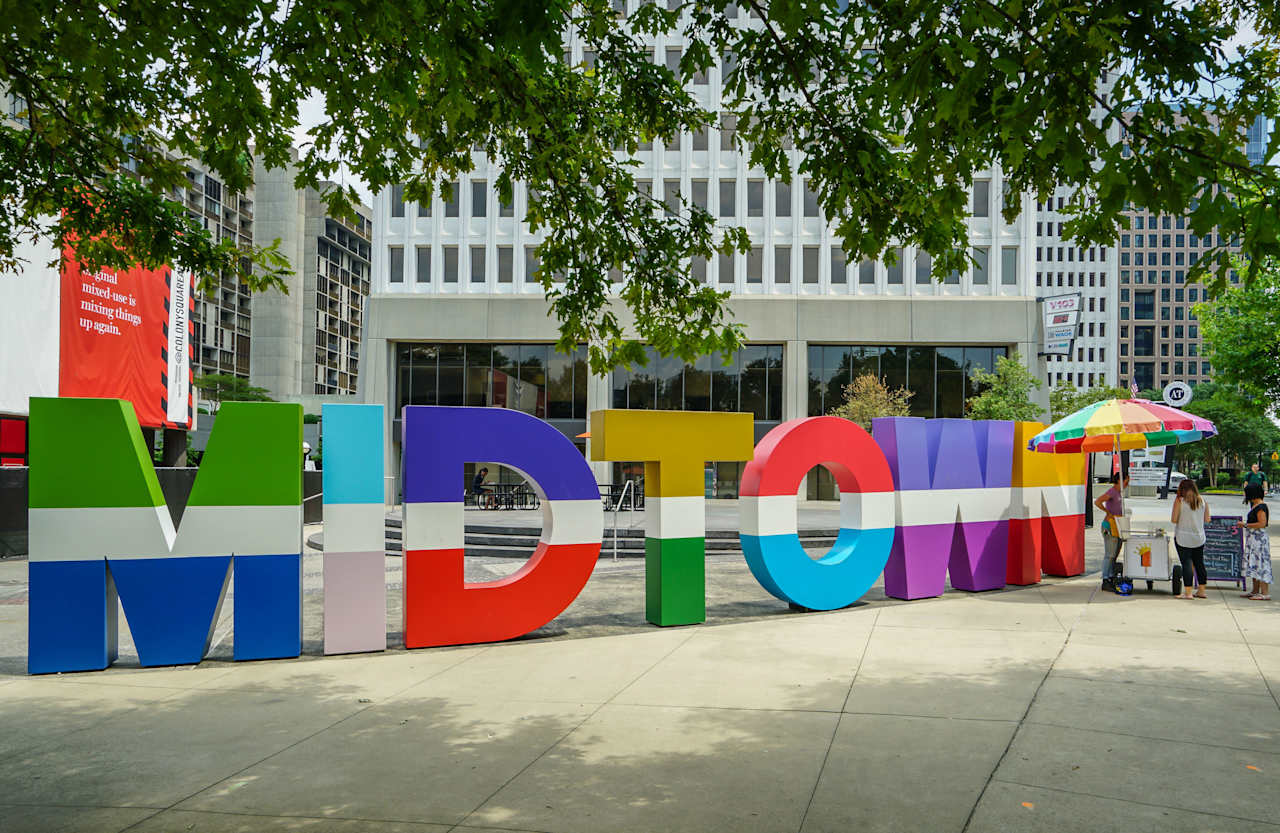
Botanical Garden

Midtown High Museum
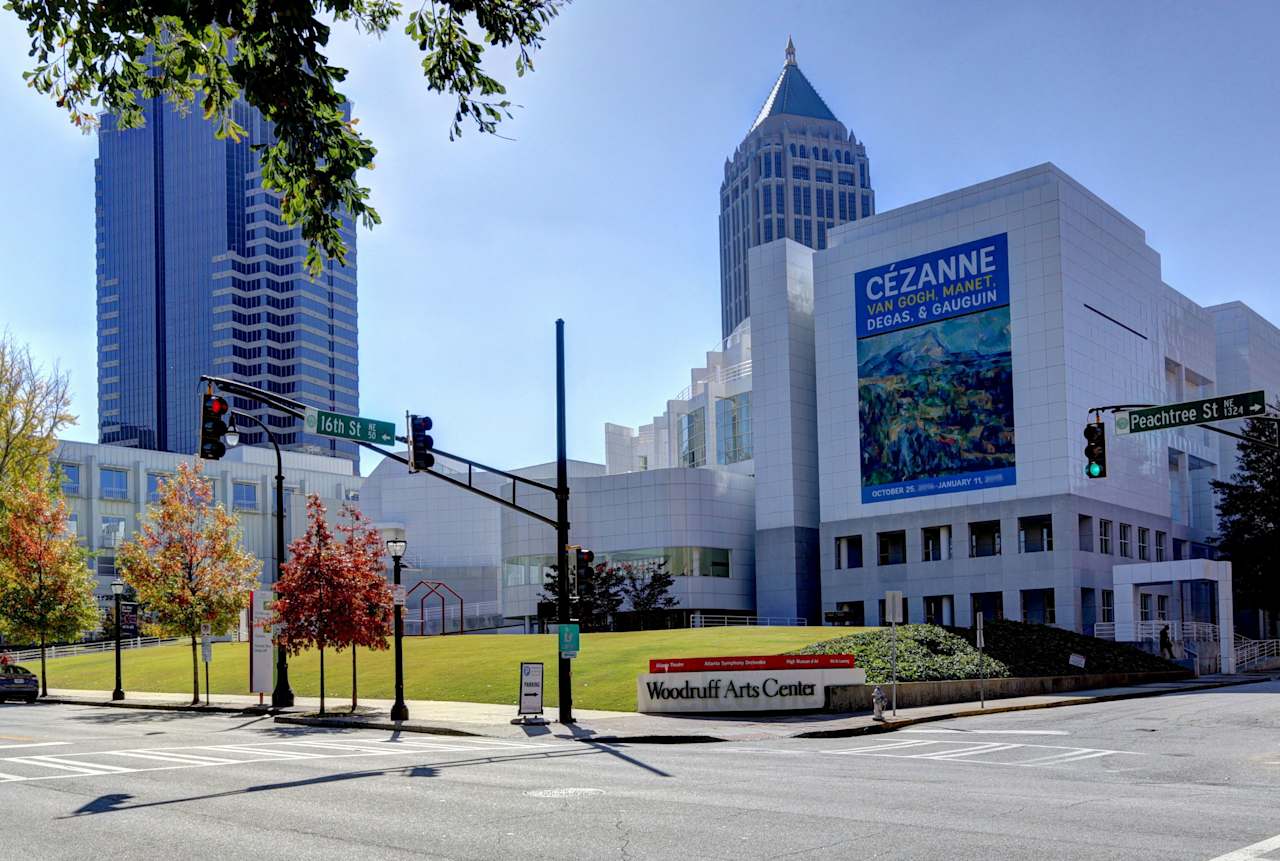
Midtown Piedmont Park
